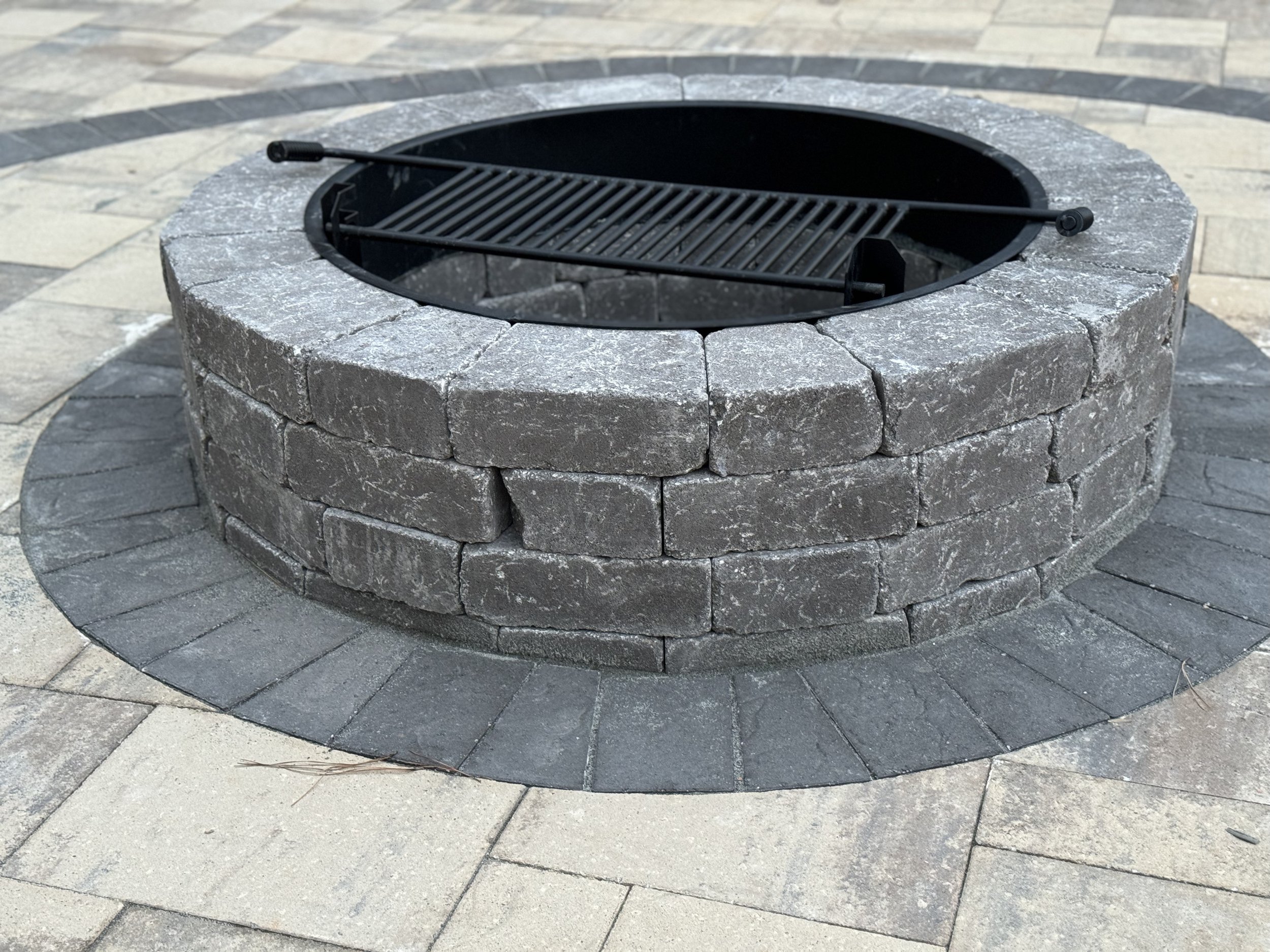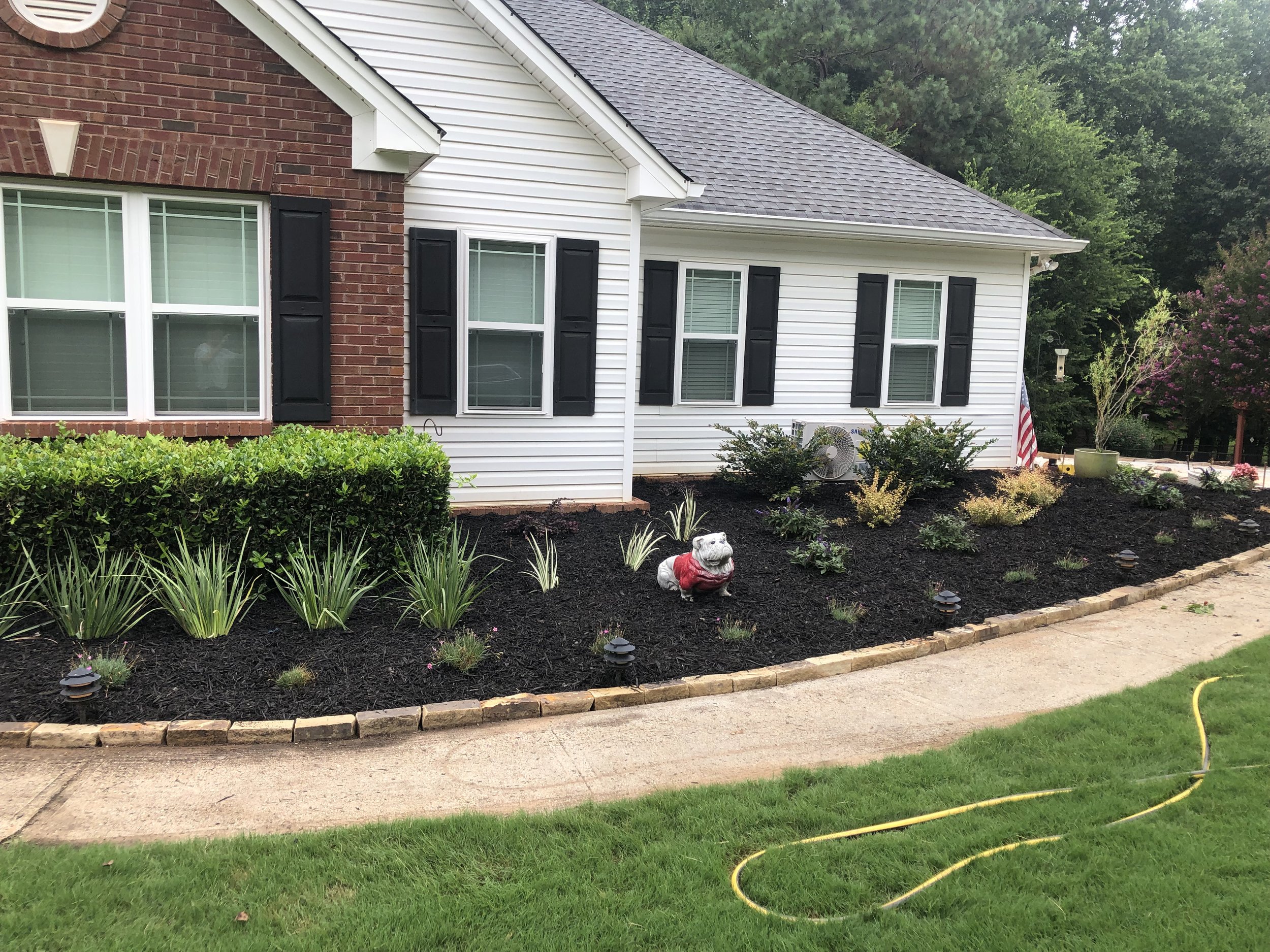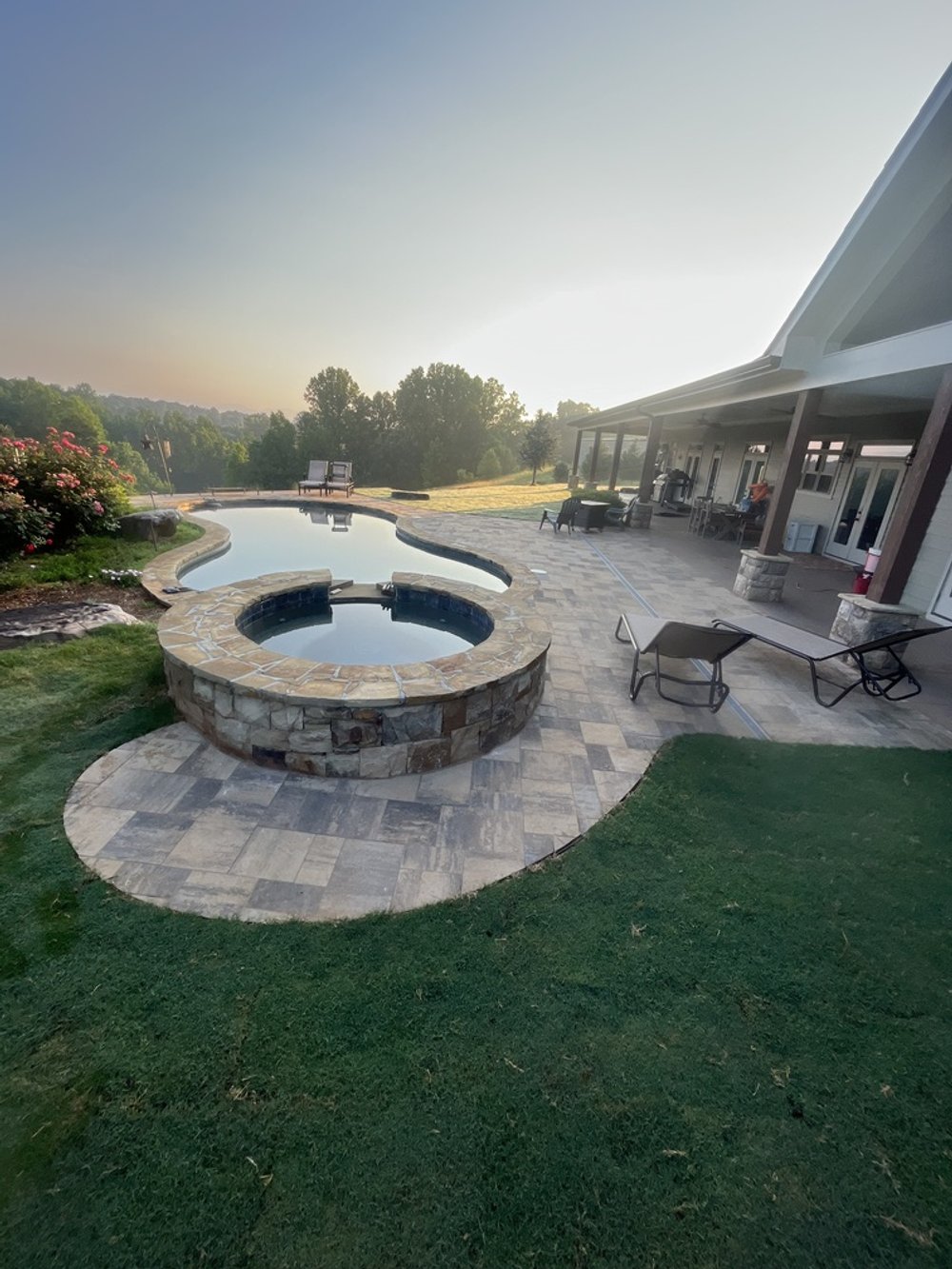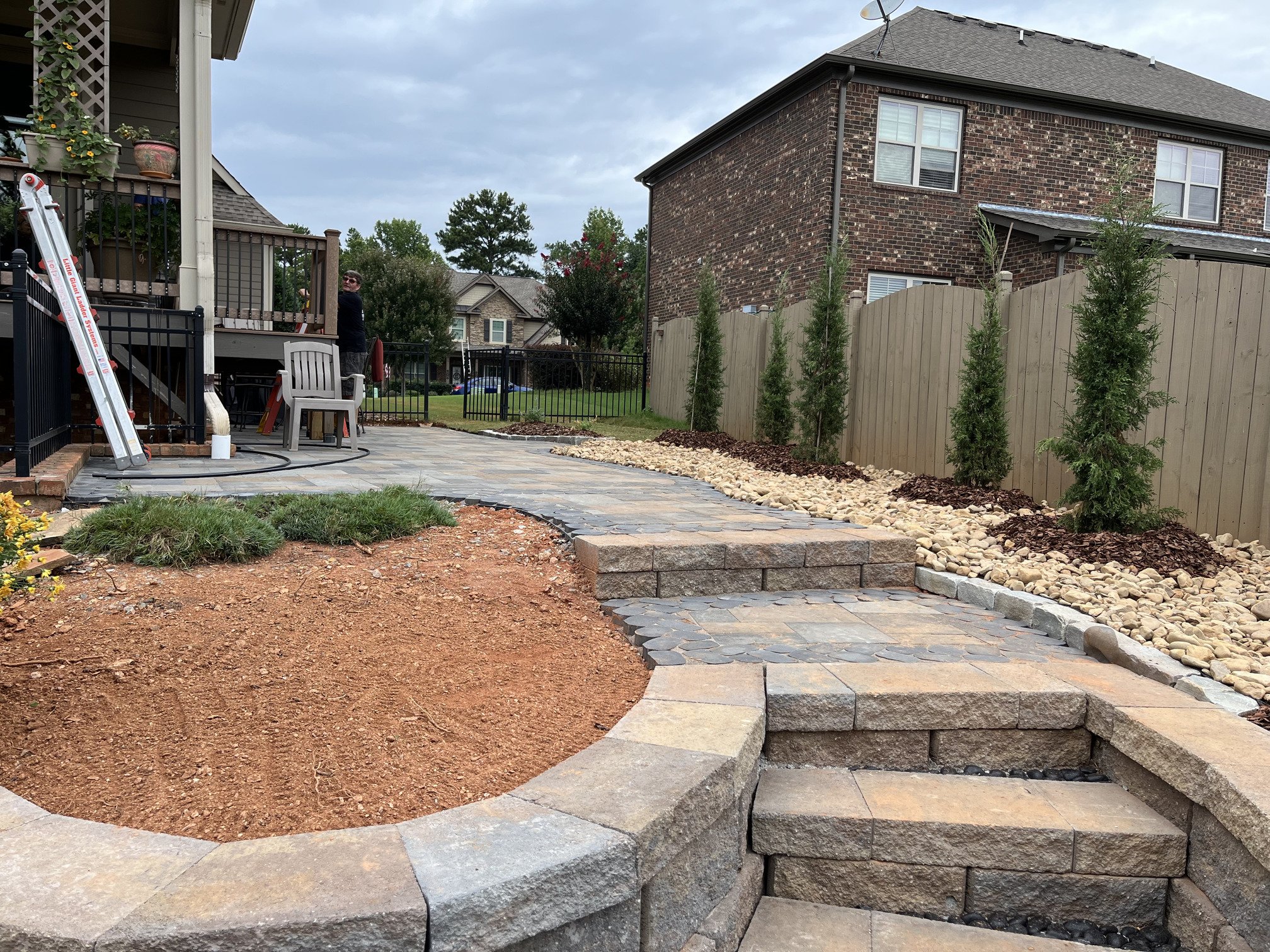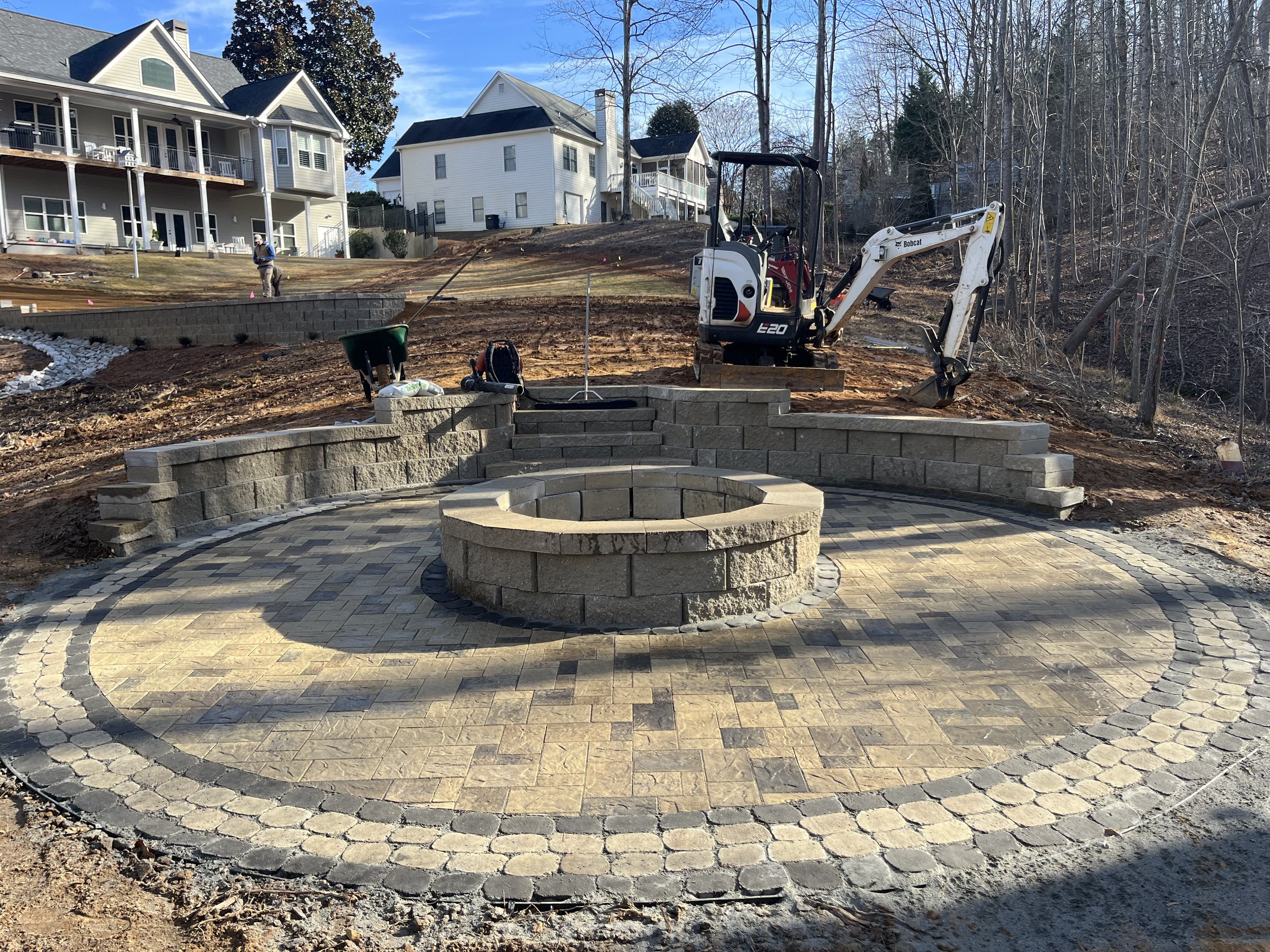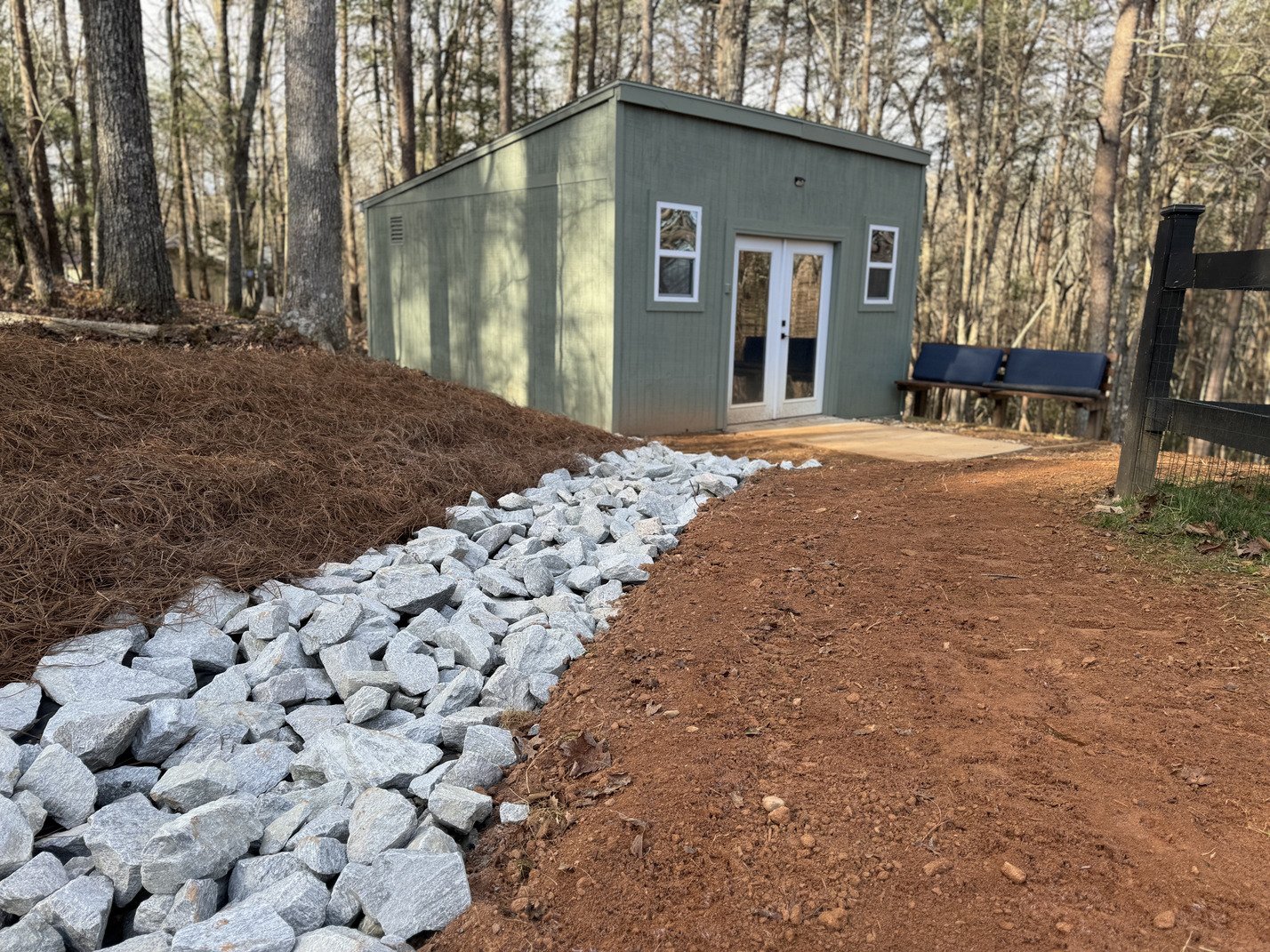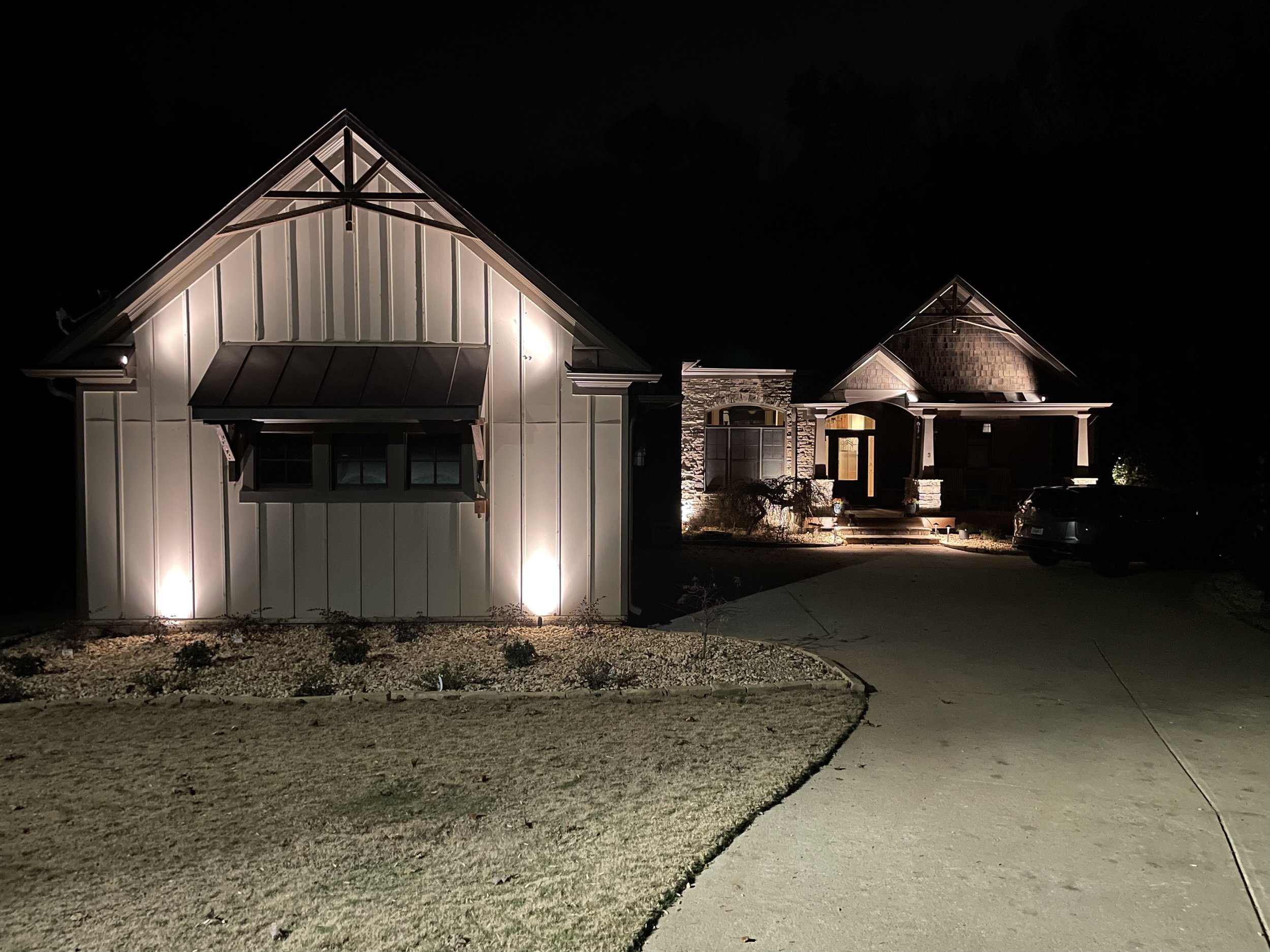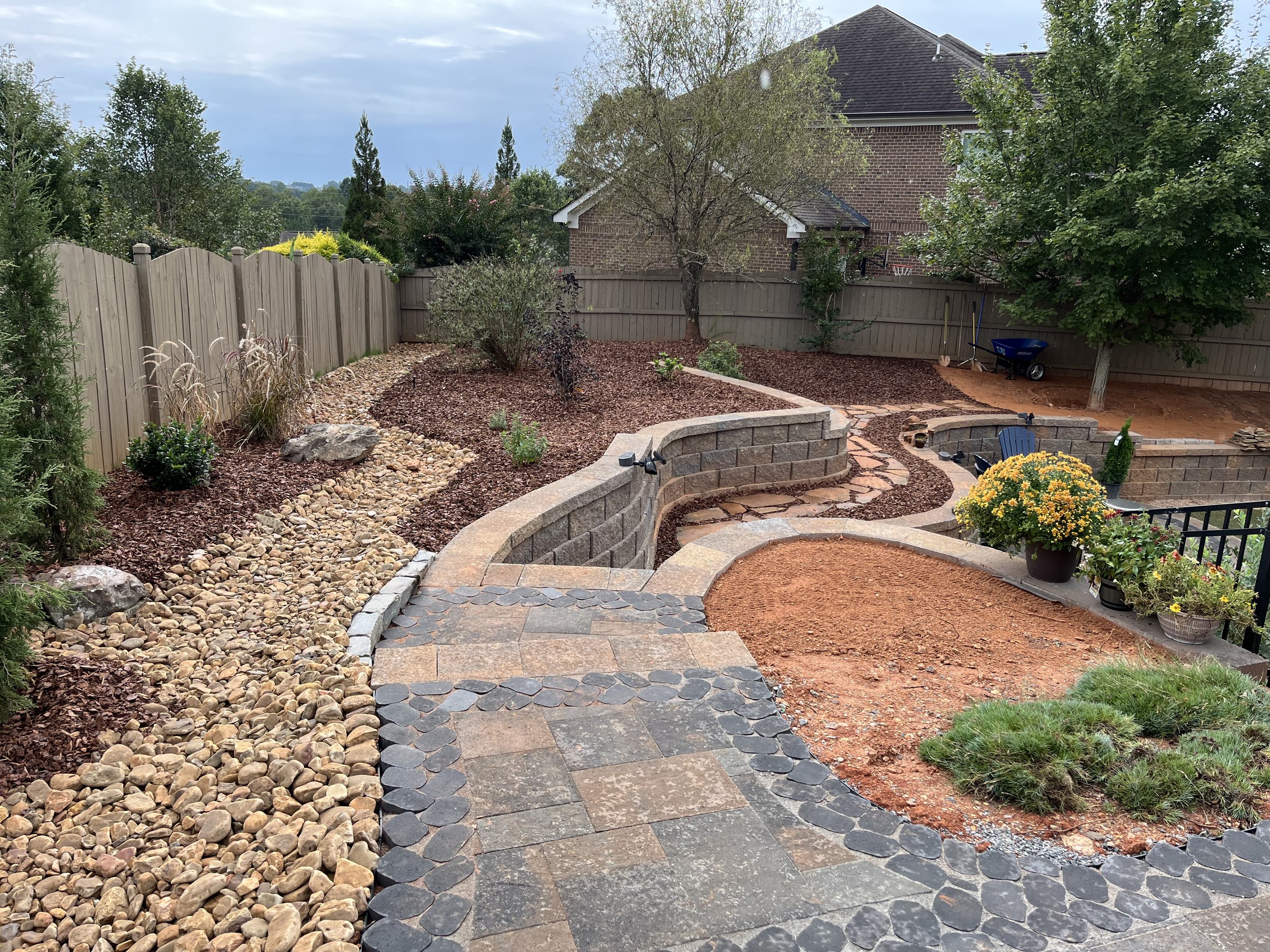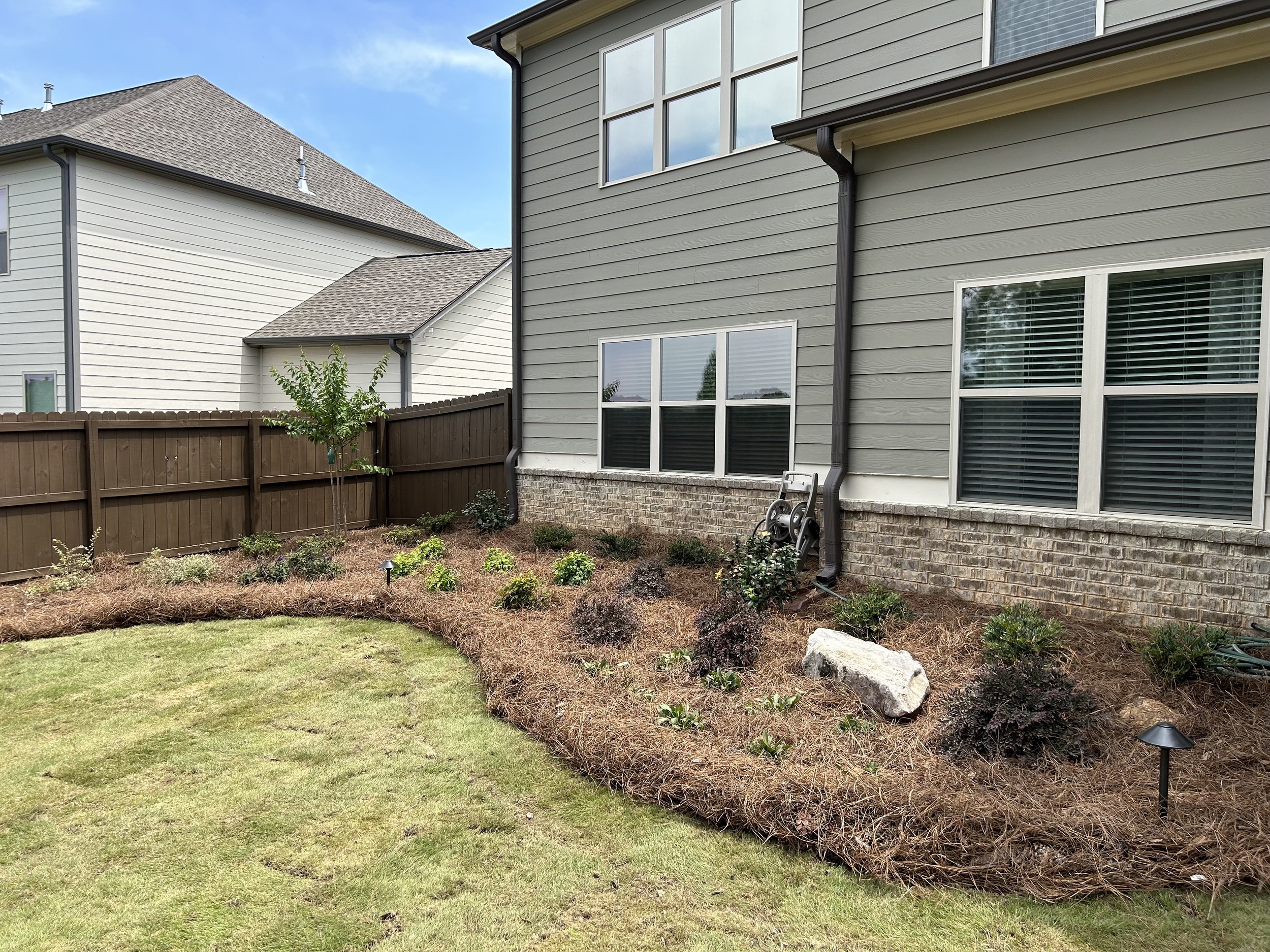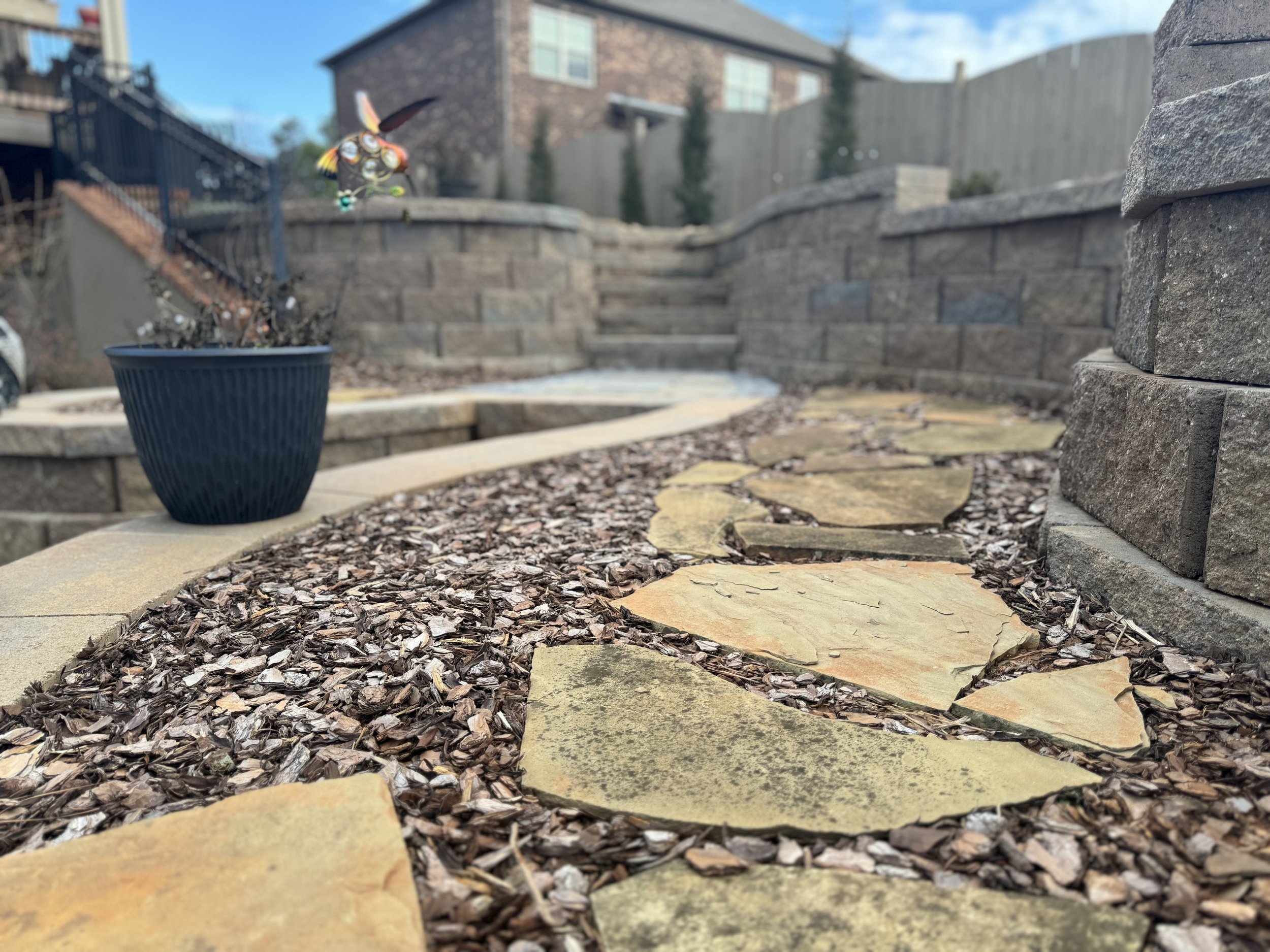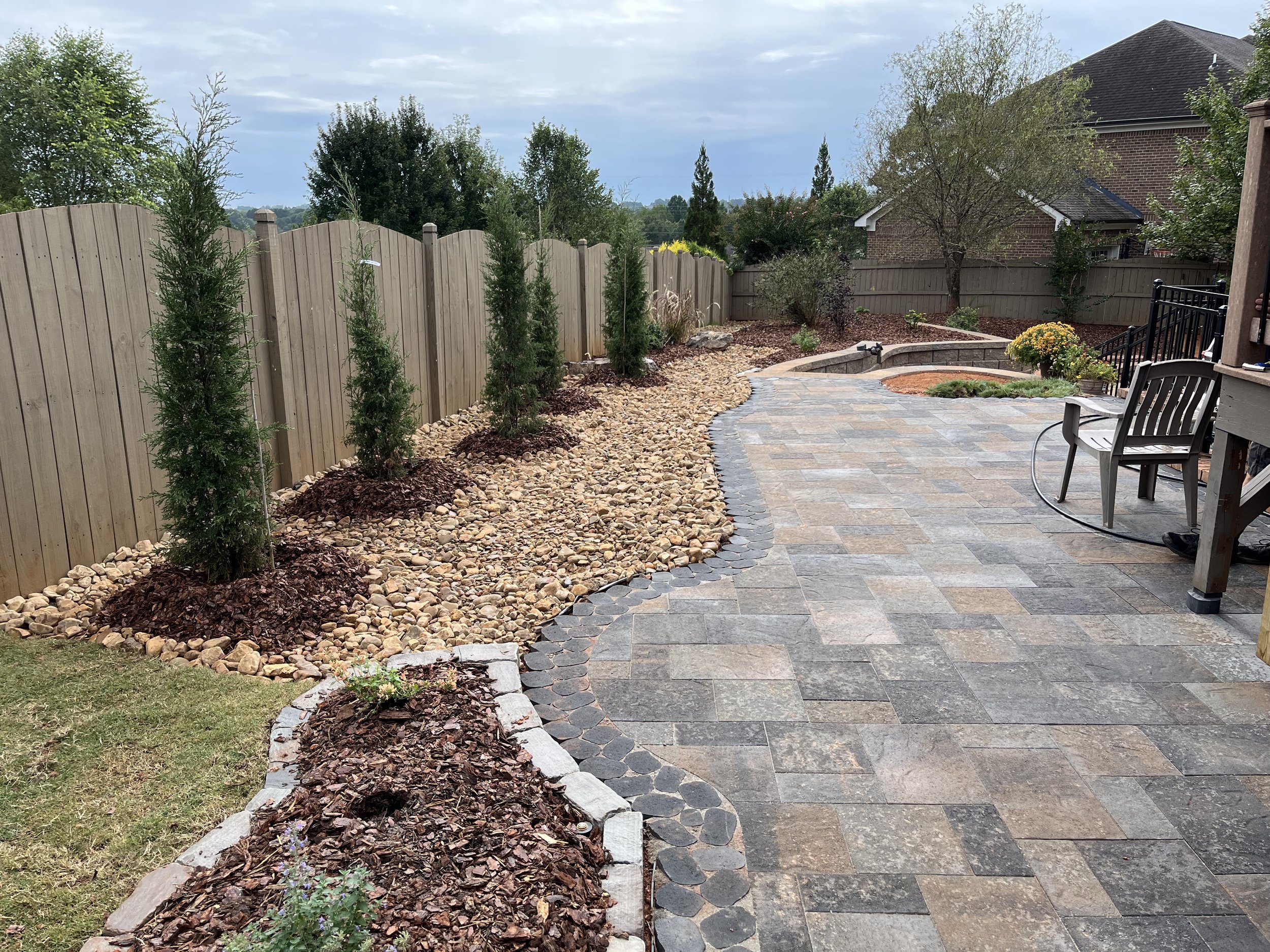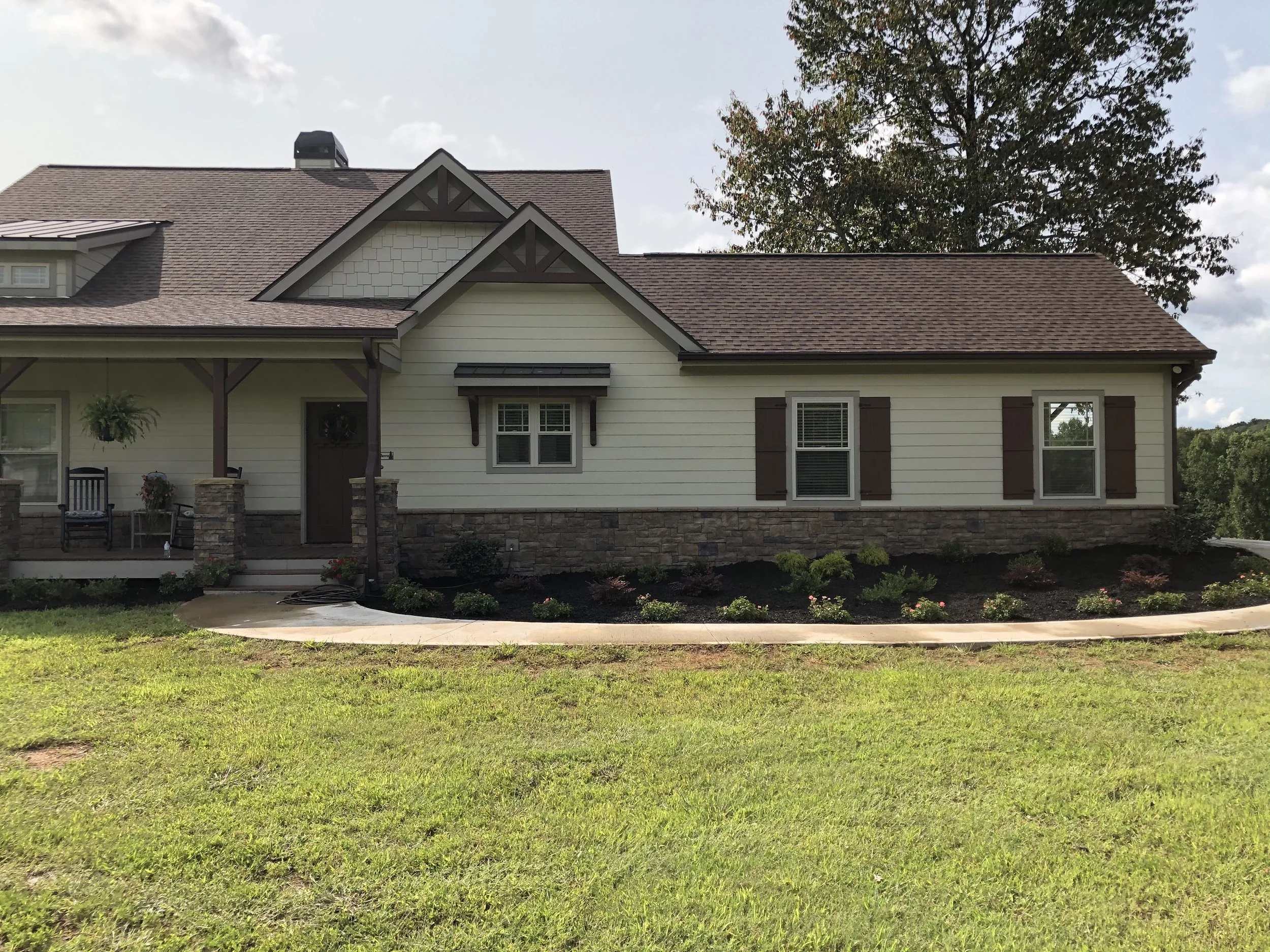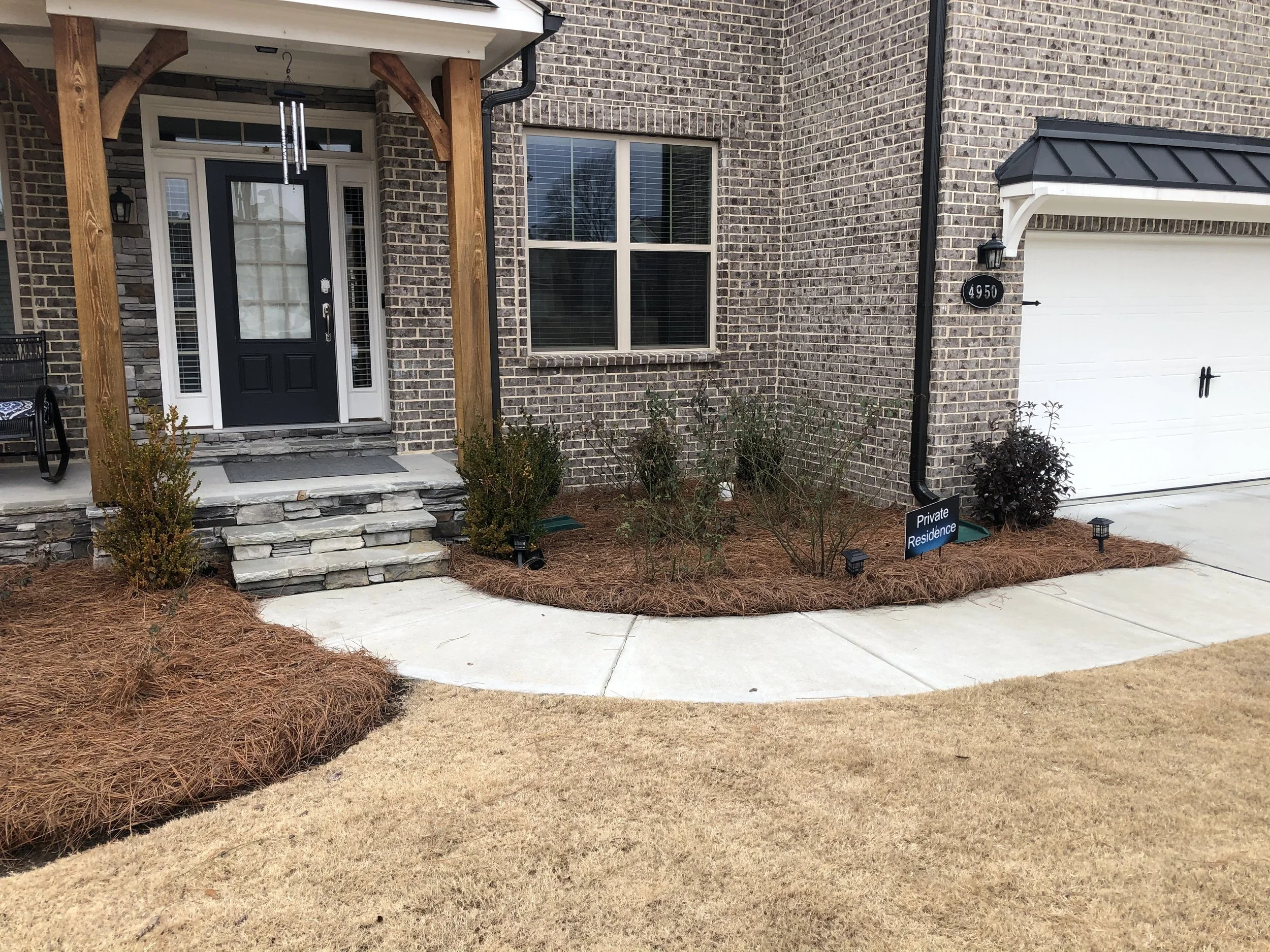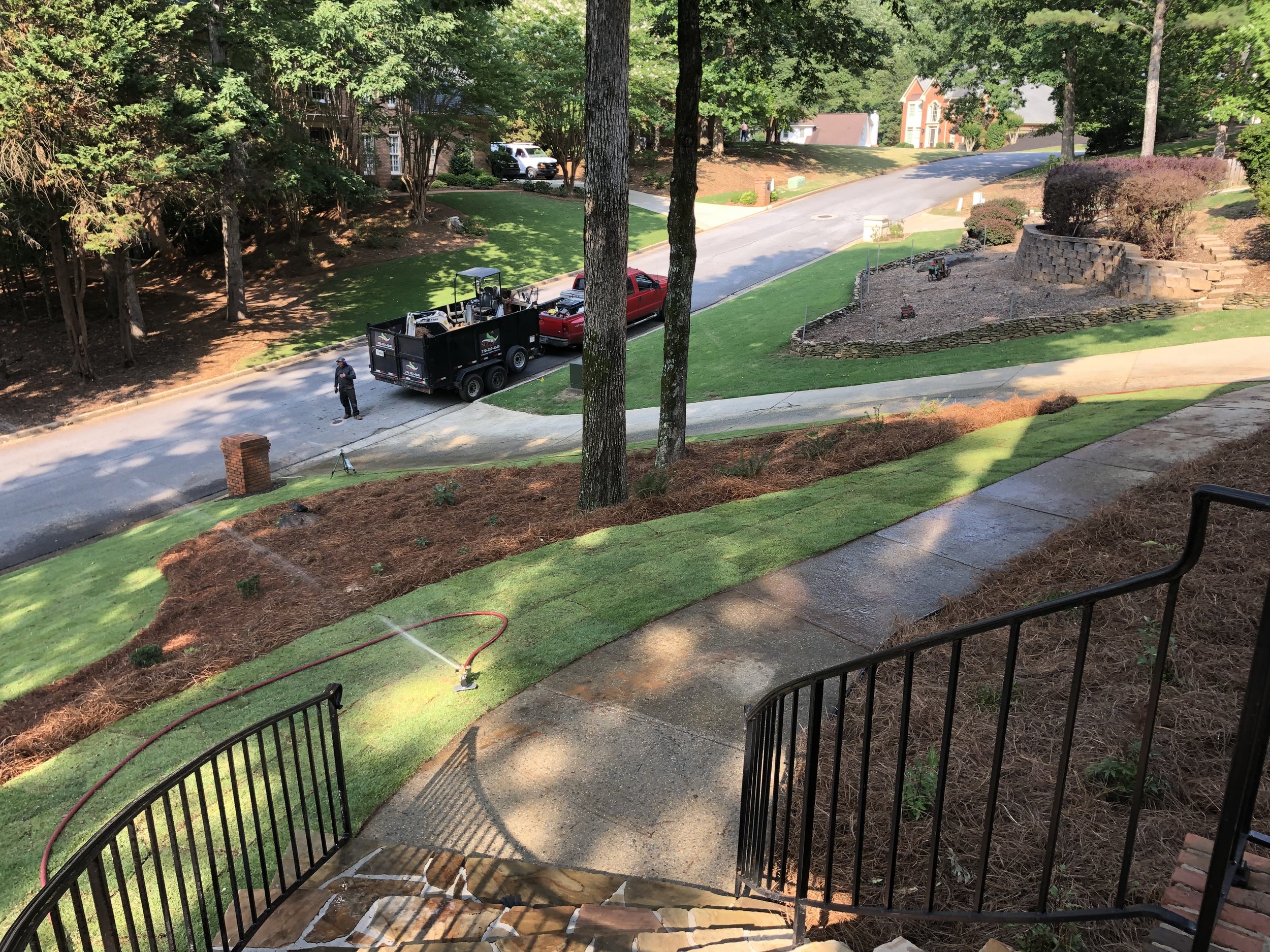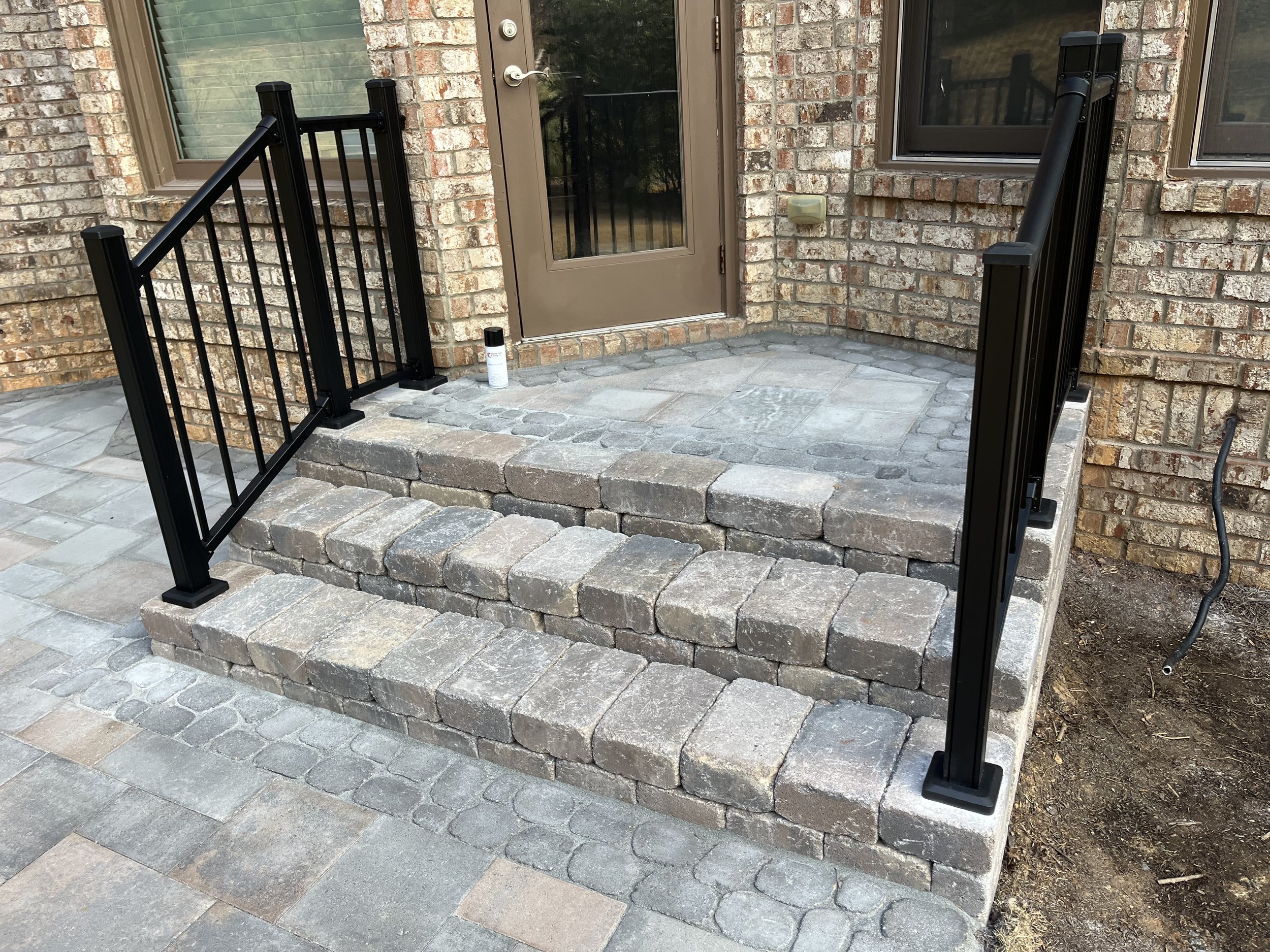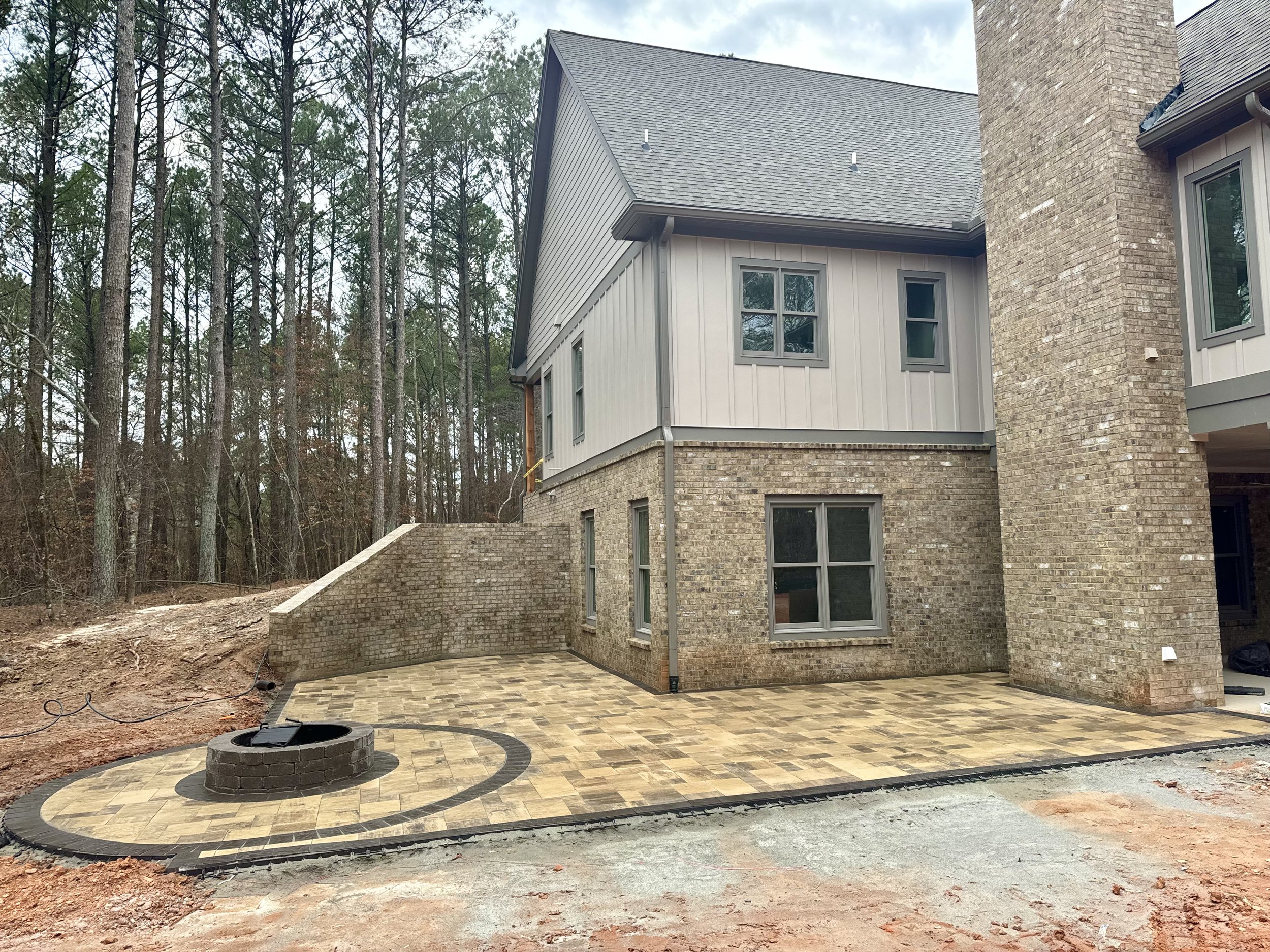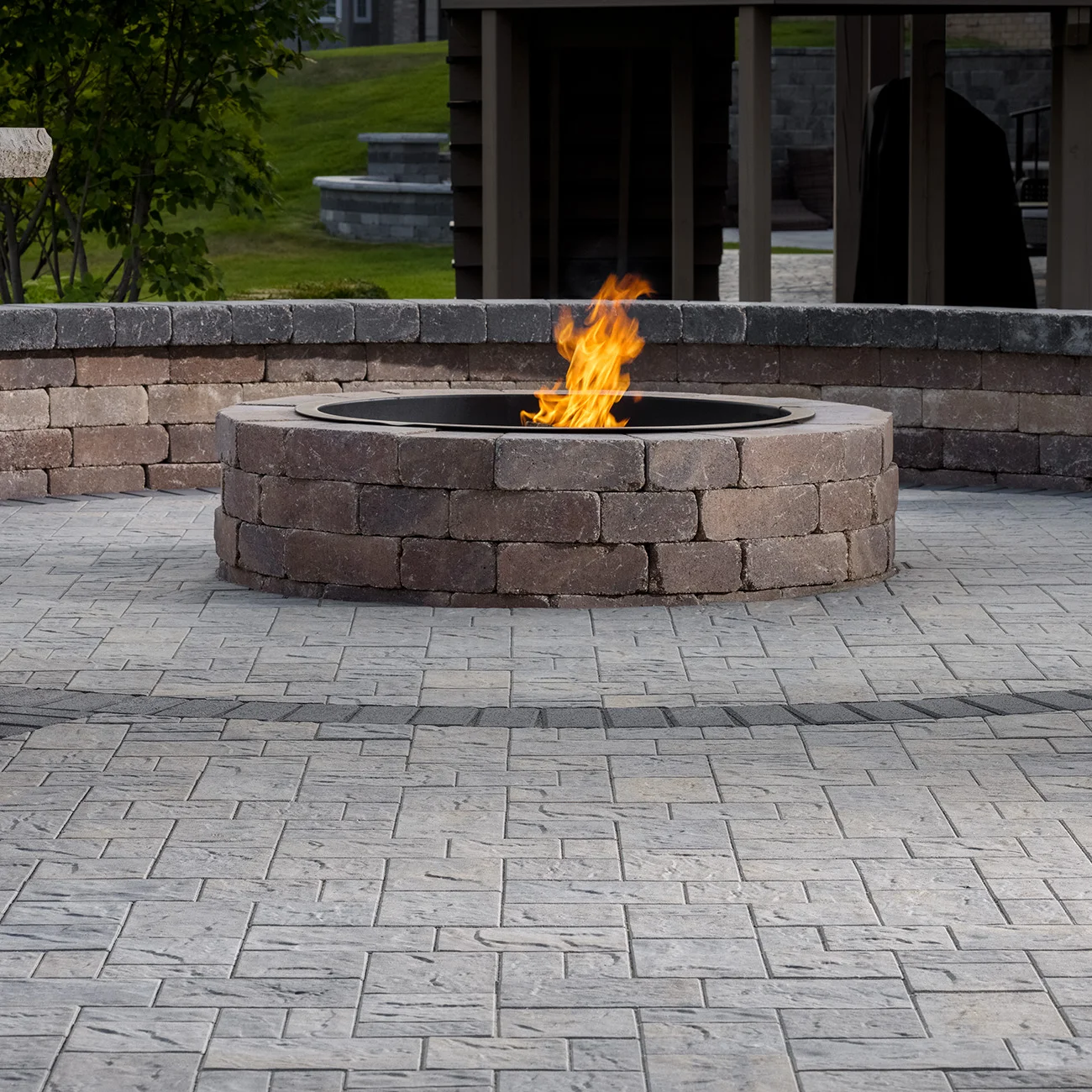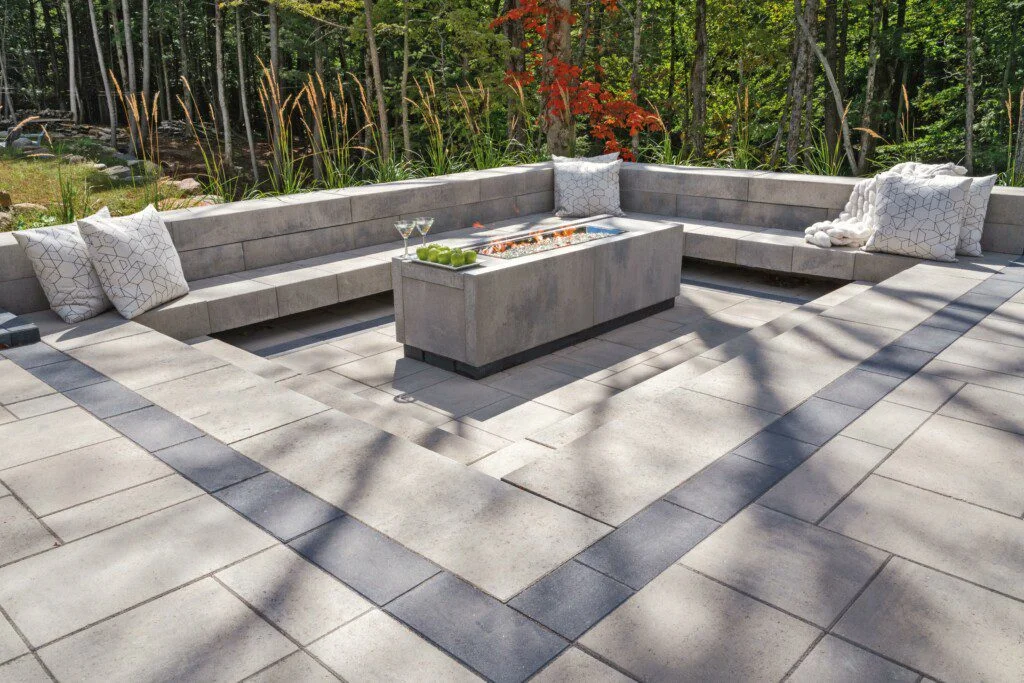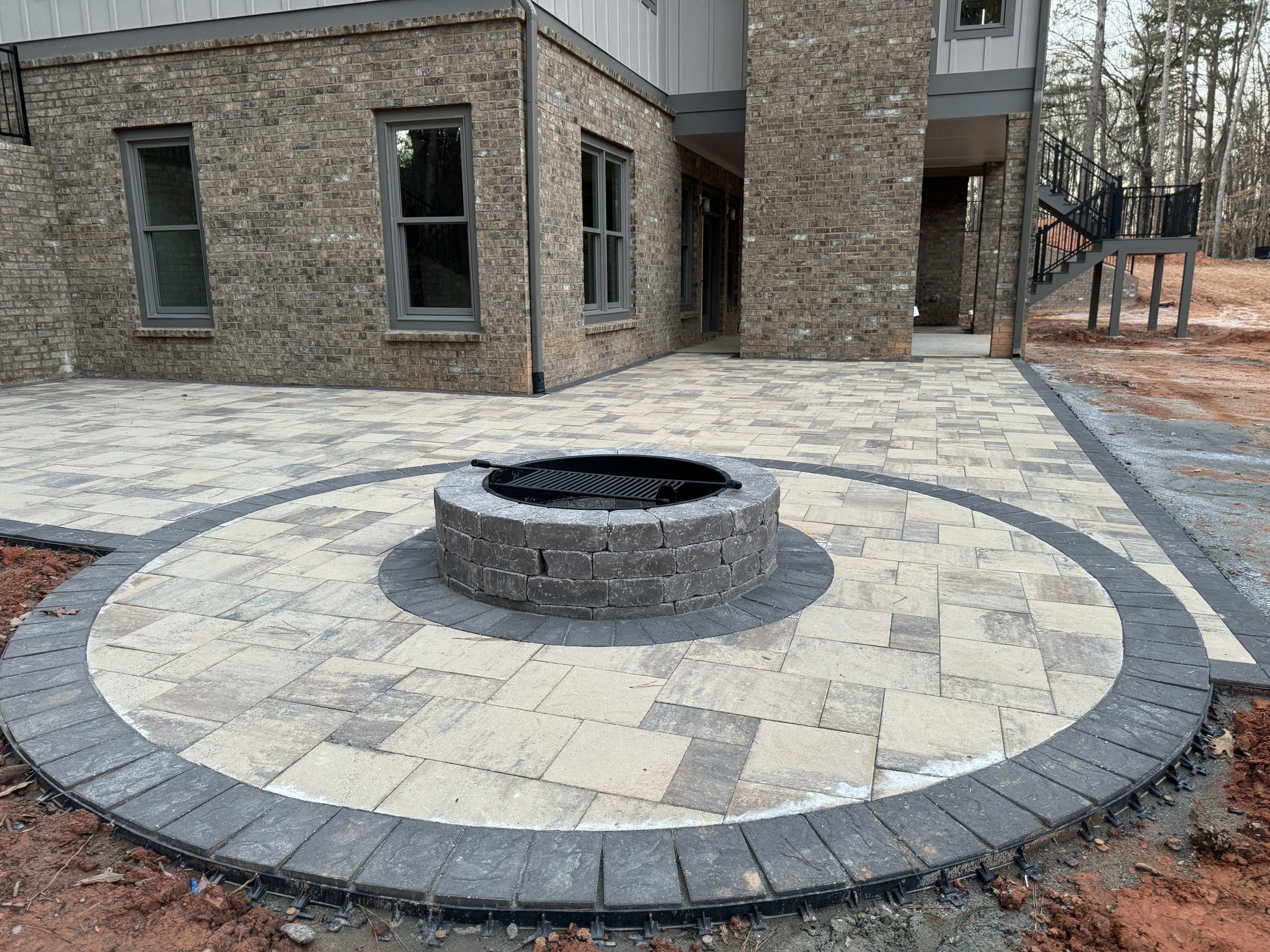
Fire Pit Design and Installation in Gainesville, Georgia
Outdoor fire pits are increasingly popular nationwide, and it’s not hard to see why. Fire pits provide significant advantages to homeowners, including heat, light, and improved resale value. They can act as a focal point of an outdoor room, improving the aesthetics and usability by making yards and patios much more pleasant and welcoming, even on cold days or nights.
-
A professional fireplace and fire pit installation is the best course for homeowners. A professional knows the local building codes and, if using gas, the requirements for gas line installation and safety protocols. They also bring fresh ideas and experience to the job site, ensuring homeowners will enjoy the finished product.
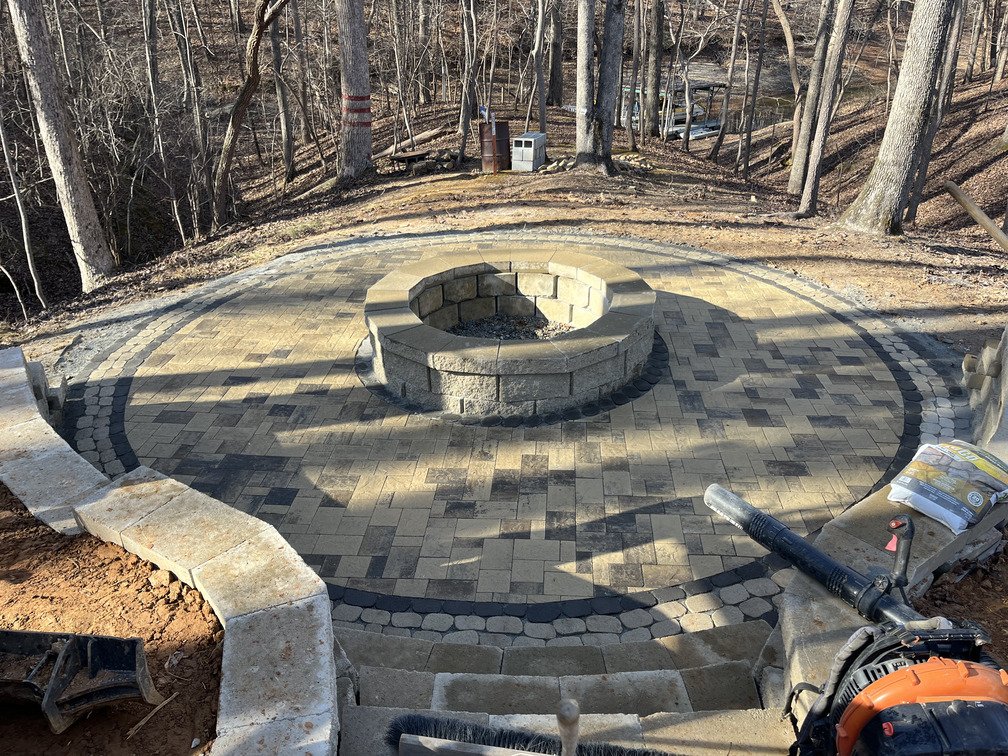
Types of fireplace and fit pits we offer
Our Reviews
Belgard Fireplaces and Fire Pits
All fire pits and places can be quoted as gas-burning
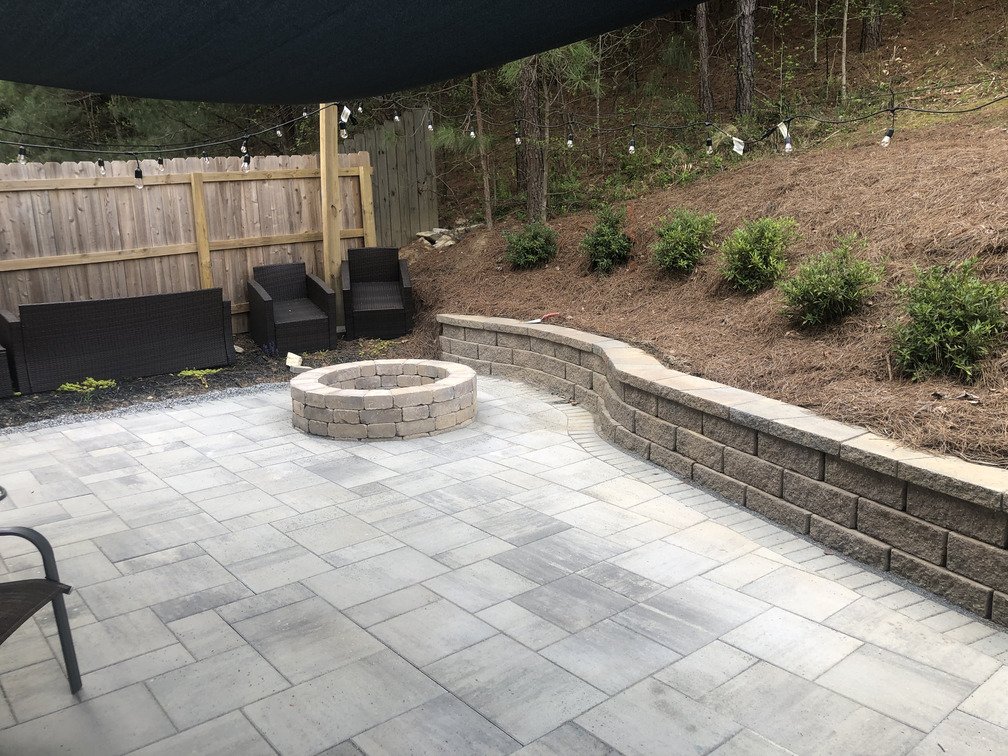
Benefits of adding a fire pit to a backyard
-
A fire pit’s warmth helps extend the times of year homeowners can spend outside. Even when the cool winter months arrive, sitting out under the stars is still possible, with the warmth of a fire from a designated pit or fireplace.
-
Outdoor fire pits and fireplaces create unique, cozy gathering spaces in the backyard. They’re perfect for dinner parties, BBQs, and more, ideal for those who want to spend more quality time with family, friends, and neighbors.
-
Fire pits are a beautiful focal point for the backyard. They draw the eye and are always pleasant to sit around in the evenings.
-
A new fire pit is a sound investment for homeowners thinking about the future. They may add significant value to a home, making it easier to sell and helping homeowners get the right price when they decide to move.
Our Service Area in Georgia
Gainesville, Cornelia, Clarksville, Cleveland, Lula, Jefferson, Dawsonville, Dahlonega, Buford, Suwanee, Cumming, Duluth, Alpharetta, Commerce
Schedule a Free Consultation
We help homeowners plan a custom fire pit, and our team brings the plan to life. Call our expert team today to schedule a free fire pit consultation.
-
What is a fire pit?
A fire pit is a structured area designed to contain and safely burn firewood or other fuels, providing warmth and ambiance for outdoor spaces.
What are the different types of fire pits?
There are various types of fire pits, including wood-burning, gas, propane, and gel fuel. Each type offers different benefits and features.
What are the benefits of having a fire pit in my yard?
Benefits include extended outdoor living seasons, added warmth, a focal point for gatherings, and enhanced ambiance.
How do I choose the right type of fire pit for my needs?
Consider factors like fuel type, size, design, and intended use. Based on your likes and requirements, we can help you select the best fire pit.
Can I customize the design of my fire pit?
Fire pits can be customized in materials, size, shape, and style to match your landscape design and personal taste.
What materials are commonly used for fire pits?
Common materials include brick, stone, concrete, metal, and fire-resistant glass.
How do I ensure my fire pit is safe to use?
Proper design, installation, and commitment to local building codes ensure safety. We use fire-rated materials, including safety features like spark guards and proper ventilation.
Do I need a permit for installing a fire pit?
A permit may be required depending on local regulations. We can assist with the permit process to guarantee compliance with local codes.
How do I maintain my fire pit?
Regular maintenance includes cleaning out ash, checking for damage, ensuring proper fuel storage, and inspecting connections for gas fire pits.
What is the best location for installing a fire pit?
The best location is away from flammable materials, structures, and trees while considering convenience and integration into your outdoor space.
How do you install a fire pit?
Installation involves site preparation, assembling or constructing the fire pit, connecting fuel sources if applicable, and ensuring proper ventilation and safety measures.
Can fire pits be installed on any surface?
Fire pits can be installed on various surfaces, including gravel, concrete, and pavers. Proper base preparation is essential for stability and safety.
What are the differences between wood-burning and gas fire pits?
Wood-burning fire pits use logs or wood chips and require more maintenance. Gas fire pits utilize natural gas or propane, offering convenience with adjustable flames and less cleanup.
Are there eco-friendly options for fire pits?
Yes, propane or natural gas fire pits are more environmentally friendly than conventional wood-burning fire pits.
Can I use a fire pit during all seasons?
Fire pits can be used year-round, although certain types may require additional care during extreme weather conditions.
What are the common designs for fire pits?
Common designs include circular, square, rectangular, and custom shapes. Depending on your preferences, designs can be simple or elaborate.
How do I incorporate a fire pit into my existing landscape design?
We consider the overall landscape design, including seating, pathways, and surrounding elements, to integrate the fire pit seamlessly.
What safety features should a fire pit have?
Safety features include spark guards, proper ventilation, stable construction, and safe fuel handling practices.
How do I choose the right size fire pit for my space?
Size should depend on your outdoor space, the number of people you want to accommodate, and the scale of your landscape design.
Can a fire pit be used for cooking?
Some fire pits are designed for cooking and include features like grill grates or cooking accessories. Check with us for options that fit this need.
What are the advantages of a built-in fire pit versus a portable one?
Built-in fire pits offer permanent installation and can be customized to fit your design, while portable fire pits offer flexibility and ease of relocation.
How do I handle smoke from a wood-burning fire pit?
Proper design, including ventilation and positioning, can help minimize smoke. Choosing dry, seasoned wood also reduces smoke production.
What is the typical cost of installing a fire pit?
Costs vary based on type, size, materials, and complexity. Contact us for a detailed estimate tailored to your project.
How long does it take to install a fire pit?
Installation time varies depending on the type and complexity of the fire pit, but most projects are completed within a few days.
Can a fire pit be installed near a pool or water feature?
Yes, but special considerations for safety and design must be made to ensure proper clearance and avoid hazards.
What types of fuel can be used for gas fire pits?
Gas fire pits typically use natural gas or propane. The choice depends on your existing utility connections or the need for a propane tank.
Are fire pits covered under homeowner's insurance?
Coverage varies by policy. Check with your insurance provider to ensure your fire pit is covered and meets safety requirements.
How do you handle fire pit installation on sloped terrain?
Special techniques and adjustments are made for slope installation, including ensuring stability and proper alignment.
What kind of seating arrangements work best around a fire pit?
Seating should be arranged at a safe distance from the fire pit, and it should be made of comfortable and durable materials that enhance the outdoor experience.
Can a fire pit be incorporated into a multi-level patio design?
Fire pits can be integrated into multi-level patios, with careful planning to ensure accessibility and safety.
How do I ensure proper ventilation for a fire pit?
Proper ventilation is ensured through design considerations like open spaces, venting systems, and avoiding enclosed areas.
What are the benefits of a fire pit with a cover or lid?
A cover or lid protects the fire pit from debris and weather, improves safety by preventing accidental contact, and extends the fire pit's lifespan.
How do I select the right stone or material for a fire pit?
Selection depends on factors like aesthetics, durability, and compatibility with your landscape design. We can help you choose the best material.
What is the difference between a fire pit and a fire table?
A fire table is a fire pit with a flat surface around the flames, often used for dining or placing drinks, while a traditional fire pit typically focuses on the fire itself.
Can fire pits be used for both heating and ambiance?
Yes, fire pits are designed to provide warmth and visual appeal, enhancing the ambiance of your outdoor space.
How do I incorporate safety barriers around a fire pit?
Safety barriers, such as glass screens or protective walls, can be added to prevent accidental contact and contain sparks.
Are there options for automated fire pits?
Yes, some fire pits come with automated ignition systems, remote controls, or timers for convenience and ease of use.
What should I consider when choosing a fire pit for a small space?
For small spaces, choose a compact design that fits proportionally, and consider a portable fire pit if space is very limited.
Can fire pits be used in urban or residential areas with strict regulations?
Yes, but it's important to comply with local regulations and restrictions. We can assist in ensuring your fire pit meets all necessary codes.
How do I incorporate lighting around a fire pit?
Lighting can be integrated through path, string, or built-in fixtures to enhance the fire pit area and provide additional ambiance.
What are the best practices for utilizing a fire pit safely?
Best practices include maintaining a safe distance, using appropriate fuel, keeping the area clear of flammable materials, and always supervising the fire.
Can I install a fire pit, or should I hire a professional?
While DIY installation is possible, hiring a professional ensures proper construction, safety, and compliance with local codes.
How do you handle fire pit installation in areas with high winds?
We design the installation to minimize wind impact, including positioning and incorporating wind barriers if necessary.
What are the options for fire pit accessories?
Accessories include spark guards, cooking grates, log holders, and decorative elements like fire glass or lava rocks.
Can a fire pit be designed to match other outdoor features?
Yes, fire pits can be designed to complement existing features such as outdoor kitchens, water features, and landscaping.
What are the advantages of having a gas fire pit over a wood-burning one?
Gas fire pits offer convenience, with adjustable flames, easier cleanup, and no need to store firewood or deal with ash.
How do I winterize a fire pit?
Winterizing involves cleaning the fire pit, covering it to protect it from snow and ice, and checking for any maintenance needs before the next use.
Are there fire pit designs suitable for modern or contemporary homes?
Modern and contemporary designs often feature clean lines, minimalist aesthetics, and materials like concrete or sleek metal.
How do I ensure the fire pit installation is done correctly?
Work with experienced professionals who follow proper installation procedures, adhere to safety standards and ensure high-quality workmanship.
How can I start a fire pit project with Rooted Landscape Management?
Contact us to schedule a consultation. We can talk about your vision, assess your space, and provide a detailed estimate for your fire pit installation.
